
© Peter Rakossy. (Click image for larger version)
Hungarian National Ballet
Tout Rouge: Firebirds, 5 Tangos
★★★✰✰
Budapest, Eiffel Art Studios
Streamed by Zoom on 8 May 2021
www.opera.hu
Something old and something new comprised this double bill from Hungarian National Ballet, filmed at their newly opened performance centre, the Eiffel Art Studios. A re-run of Hans van Manen’s 5 Tangos, filmed last September, completed a programme that opened with the premiere of Firebirds (the plural being intentional), with the rare distinction of having been created by an all-woman team (excepting Stravinsky, of course).
Firebirds opened with a quotation, read in Hungarian by actor László Sinkó, from Sándor Márai’s Füves Könyv, a book of maxims and personal reflections, published in 1943. Thankfully, an English translation was provided and the prose appears to liken women to birds, beginning: “Women innately find their own amorous nourishment like birds find seeds or fish” and continuing in similar vein. The seven “firebirds” opened Marianna Venekei’s new ballet, initially coming into view on board an oddly-shaped, revolving, angular structure – designed by Éva Szendrényi – with lower edges picked out in blue neon strip lighting and the sloping surfaces marked out in triangles. The female septet originally appeared as if at the prow of a ship, an image accentuated by the camera angle from below against a misty background.
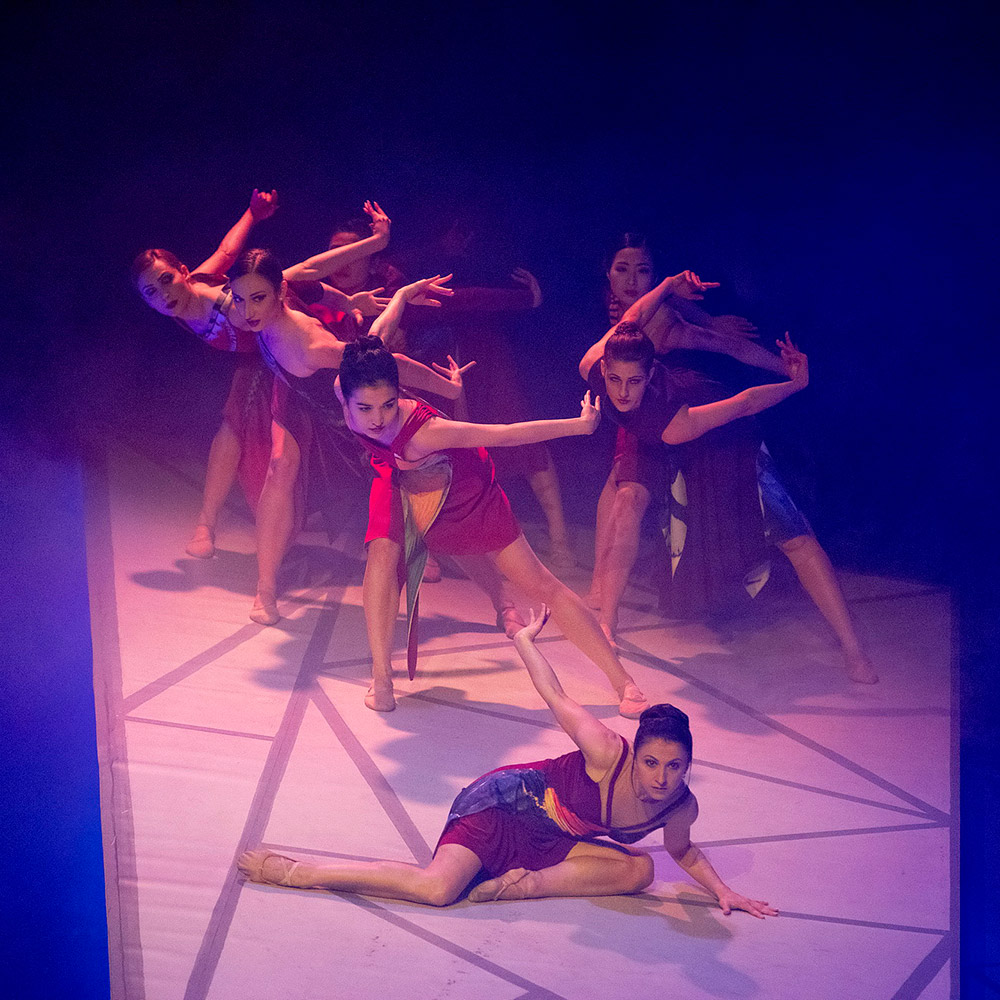
© Peter Rakossy. (Click image for larger version)
Each woman wore a dress with their own distinctive pattern (costumes designed by Krisztina Berzsenyi). They broke out into a sequence of solos, in which Lea Földi was prominent, using the edge of the structure as if a gymnast mastering her apparatus. Seven firebirds need a “Tsarevich” each and so seven men duly appeared and couples quickly paired off although nothing appeared to indicate that the firebirds were gobbling up their amorous nourishment ‘like seeds or fish’. In some cases there were similarities in the costuming of the partners – a motif on the woman’s dress was similarly highlighted on the man’s suit but, intriguingly, this was not obvious for every pair.
The various pas de deux were danced both on the flat stage and the steep slopes of the revolving structure (not an easy task) and Venekei’s choreography for these couples had an attractive fluid quality with one duet seamlessly melting into the next. Musicality was a bit hit and miss: sometimes the dancers seemed in perfect harmony with the music, while elsewhere the interaction appeared jarring (particularly in the softer moments in the ‘enchanted princesses’ section of the score).
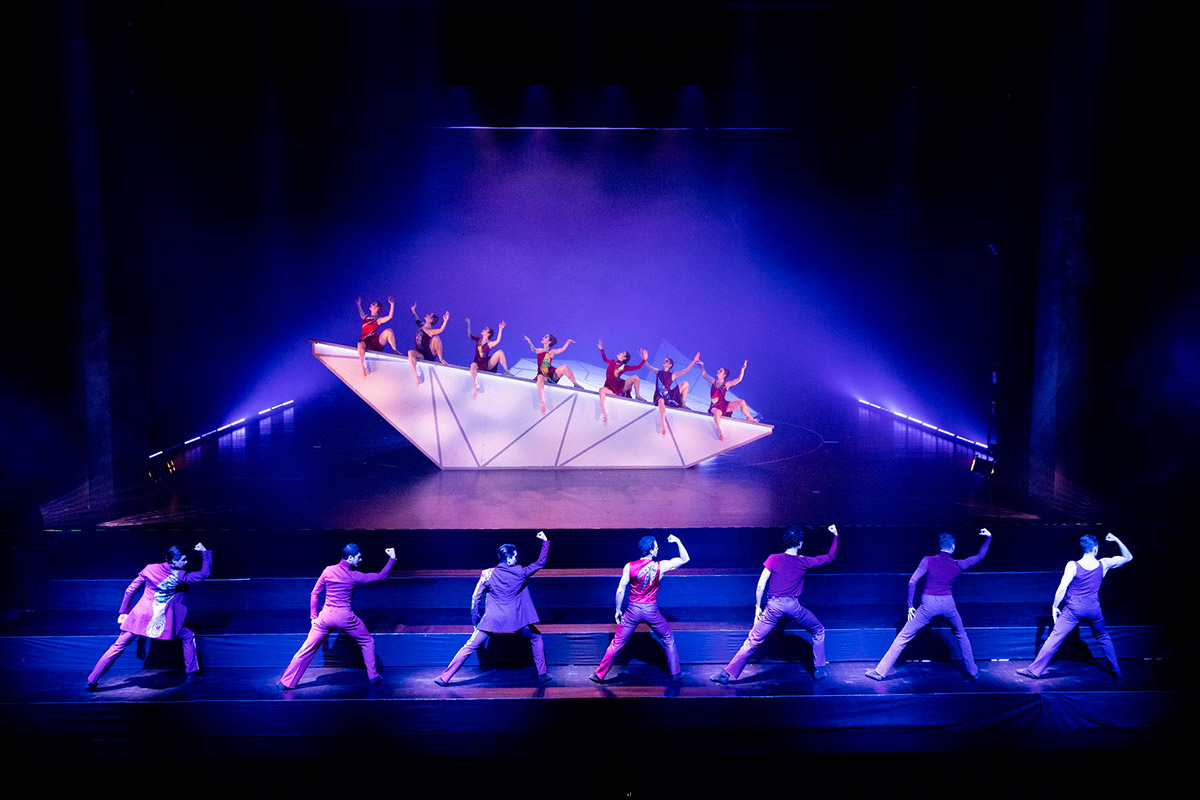
© Peter Rakossy. (Click image for larger version)
The unveiling of a large red backdrop introduced Stravinsky’s music for the arrival of Kostchei the Immortal, although the old ogre is nowhere to be seen in this interpretation and instead the two groups (men and women) took opposite sides of the structure appearing to challenge one another in group dances, as in a street battle, capturing the aggressive intentions in Stravinsky’s music; the harmony of the two groups at rapid tempo was impressive. With the gradual dissipation of their frenetic movement, the men tore down the crimson backdrop and disappeared leaving the seven firebirds back in charge of their revolving world. As the smoke returned, their fluttering arms finally suggested an avian corporeality; and gradually one-by-one, they crawled from underneath the structure to form a group downstage, dancing in fluid unison with arched backs and harmonious turns as the music for the apotheosis grew into its climax. The seven women finished by dancing in a line on a thin strip of stage, seemingly over the orchestra pit, before dropping out of sight one-by-one from left to right: the final firebird going into the void with a comic shrug. At their departure and with the final notes of the music, the seven men reappeared. It was unlike any interpretation of Stravinsky’s ubiquitous music that I have ever seen, which in itself is a notable achievement. What it meant – particularly in relation to the clue of that opening quotation – was beyond my ken.
I will say little about van Manen’s 5 Tangos since it was a filler film from eight months’ previously. Suffice to say that – 44 years after it was created – it remains a capsule of dance that mixes the music (all popular tunes by Astor Piazzolla) and style of tango and classical ballet with great flair. By coincidence, it is also a ballet for seven men and seven women, which follows a traditional format of having them all present for the beginning and the end.
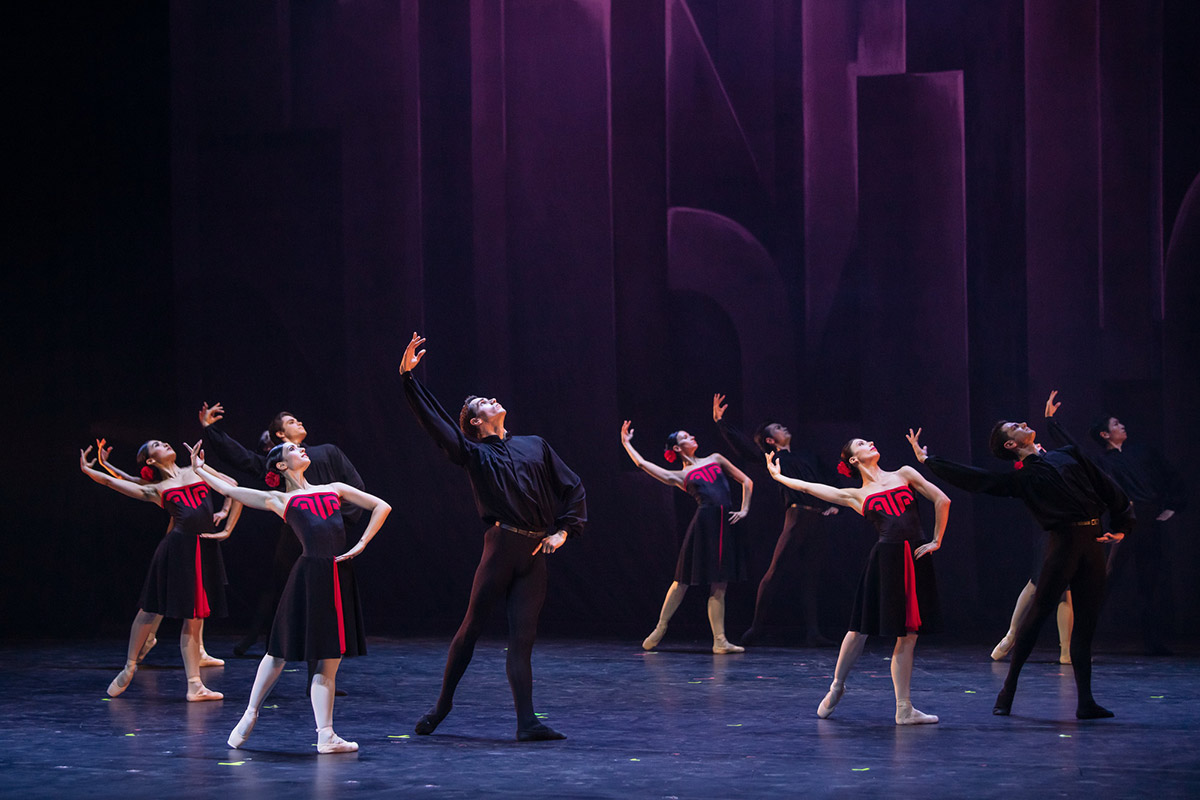
© Attila Nagy. (Click image for larger version)
Van Manen largely focused his attention on partnered dances, majoring on a lead pair – Gergely Leblanc and Lili Felméry – who enjoyed a long duet that fused classic tango rhythms with pointework and lifts. Felméry then found herself partnered with the other six men finishing in an exit en pointe. It is the least tango-infused section of the five and led into an explosive solo for Leblanc who prowled the stage like a lothario at a milonga, before letting loose with some mighty jumps and pirouettes to provide the ballet’s most exciting moments. The quartet of the fourth movement is where van Manen really captured the essence and the mood of tango in ballet with his trademark overlay of frivolity. It is to Venekei’s credit that her new choreography sat comfortably alongside this classic of yesteryear.







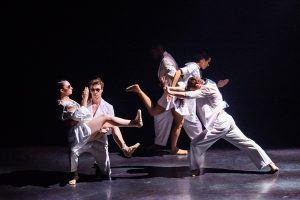

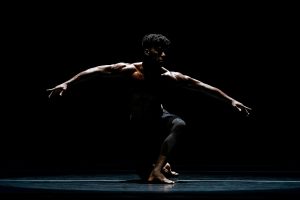
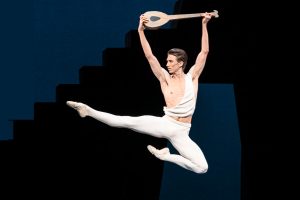

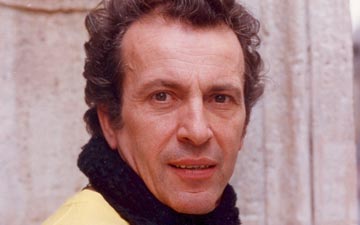
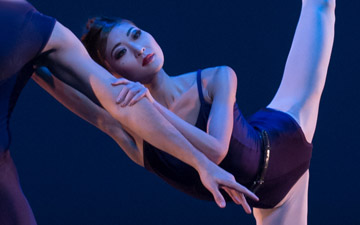
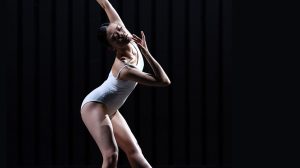

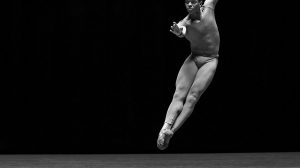
You must be logged in to post a comment.